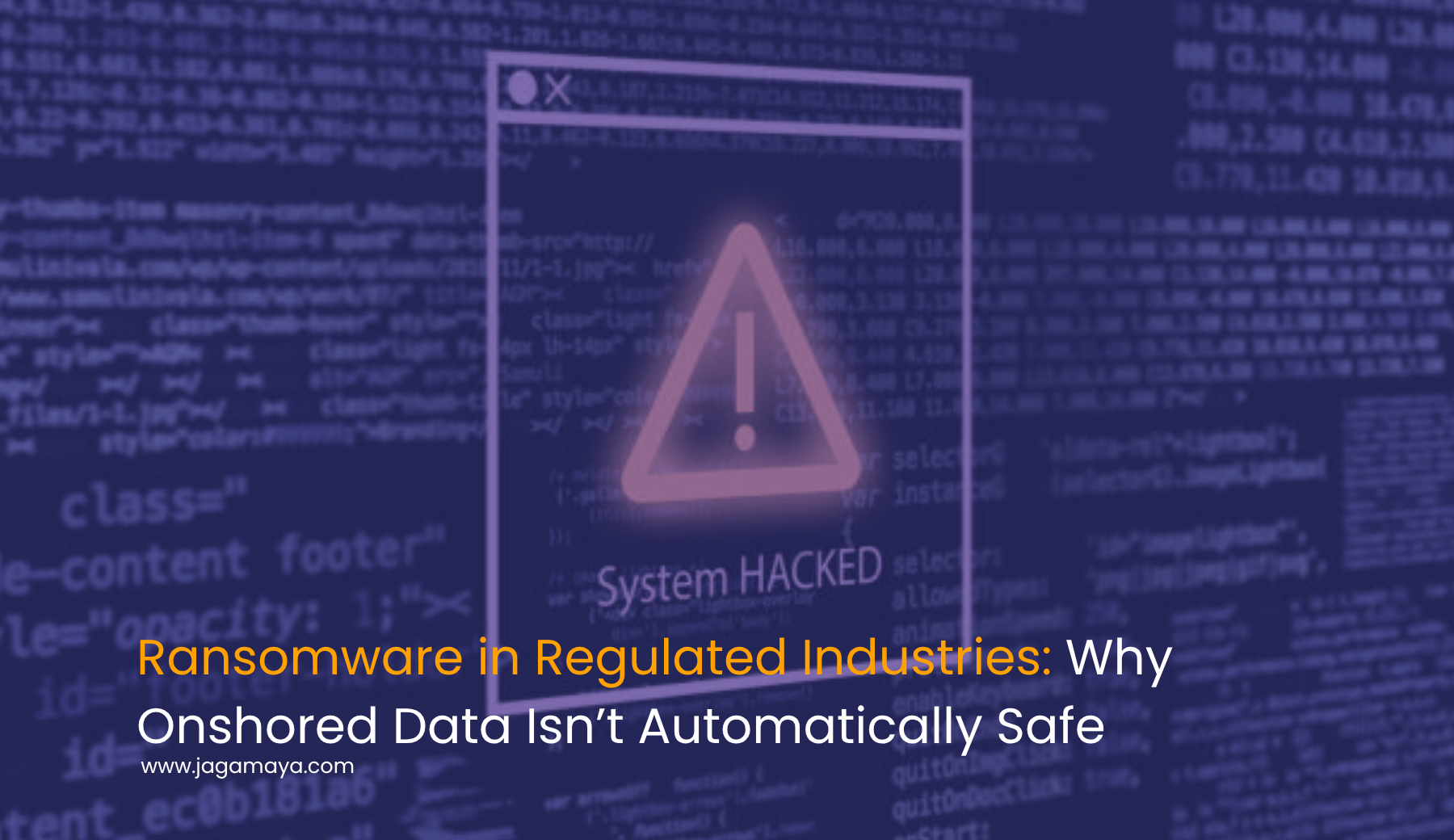As organizations rush to comply with data sovereignty and localization mandates, many assume that hosting data on national soil inherently makes it more secure. But in sectors like healthcare, finance, government, and education, that assumption can be dangerously misleading. Onshoring data is a compliance step—not a security solution—especially when it comes to ransomware.
The False Sense of Security
Onshored data often satisfies legal requirements such as Indonesia’s PP 71/2019 or the Personal Data Protection Law (UU PDP). But ransomware actors don’t care where the server is located—they care about:
- What data they can encrypt or steal
- How valuable that data is to operations
- How much the victim is willing to pay
In 2023 alone, ransomware attacks hit numerous Indonesian government portals and financial institutions—even those using local infrastructure. The attacks bypassed perimeter defenses through phishing, insider access, unpatched systems, and insecure remote access—not through foreign hosting vulnerabilities.
Why Regulated Industries Are Prime Targets
- Valuable Data: Health records, financial data, citizen registries, and academic research are lucrative on the black market.
- Strict SLAs and Compliance Pressures: Institutions may be more willing to pay ransoms to avoid regulatory penalties or public scandals.
- Complex, Often Outdated Systems: Many regulated organizations rely on legacy software with poor patching routines.
- Low Cybersecurity Maturity: Especially in non-tech-focused sectors like education and healthcare, security teams are often underfunded and understaffed.
What Onshoring Doesn’t Do
- It doesn’t stop encryption: If an attacker gains access, they can encrypt locally hosted data just as easily as foreign-hosted data.
- It doesn’t stop credential theft: Phishing or stolen admin credentials can compromise access regardless of server location.
- It doesn’t replace monitoring and response: Without a local SOC or SIEM solution, even onshored environments may go days before detecting an intrusion.
Building Real Resilience Against Ransomware
To secure onshored data, organizations—especially in regulated sectors—must combine localization with layered cyber defense:
- Deploy Zero Trust Architecture (ZTA): Limit lateral movement and enforce identity-based access to critical systems.
- Implement Real-Time Monitoring: Tools like JagaMaya’s Teja Bhaya (SIEM) and iAPM help detect anomalies in real-time.
- Encrypt and Backup: Use immutable backups with daily snapshot routines stored on separate infrastructure.
- Run Incident Response Drills: Simulate ransomware attacks to assess your organization’s recovery speed and communication protocol.
- Patch Relentlessly: Apply security updates to servers, third-party software, IoT endpoints, and even firewall firmware.
- Educate and Simulate: Regular phishing simulations and staff awareness campaigns can drastically reduce successful breach attempts.
Legal and Compliance Considerations
Data localization laws often mandate where data is stored—but not necessarily how it’s protected. Regulators are now pushing for:
- Cyber hygiene certification
- Incident response logging
- Reporting timelines (e.g., 72 hours)
- Proof of backup and recovery readiness
Simply having data stored in Indonesia won’t absolve an institution of legal or operational risk if ransomware exposes it.
Conclusion: Don’t Confuse Compliance with Security
For regulated industries, onshoring data is a necessary step—but it’s just the beginning. Real protection from ransomware demands a combination of:
- Compliance-driven design
- Real-time defense
- Operational discipline
- Local visibility
At JagaMaya, we help secure onshored infrastructure with sovereign SOCs, automated detection, and compliance-aligned recovery solutions—built for Indonesia’s unique threat landscape.
Onshored data can still be ransomed. Only resilient systems can recover.


Leave a Reply